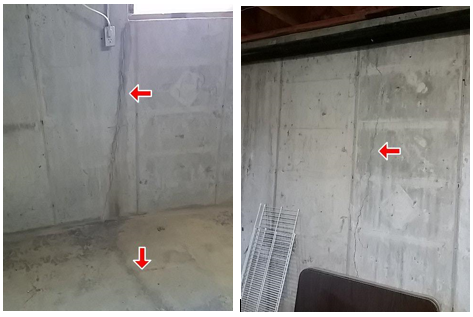Foundation cracks, which are signs of foundation damage, can mean very different things depending on the material from which a foundation is made, the location, size, and shape of the foundation crack, and other site observations.
How to Diagnose the significance of types of vertical cracks in foundations
- Vertical foundation cracks in masonry between two structures – differential settlement or thermal movement, often seen where an add-on garage is built on more shallow footings on backfill next to a full foundation.
- Vertical, nearly straight or wandering cracks in poured concrete, generally even width, intermittent, or more often straight – shrinkage / thermal – low risk
- Vertical cracks, straight generally even width, in a masonry block wall, in mortar joints but possibly right through concrete block – shrinkage / thermal – low to modest risk
- Vertical foundation cracks that are straight or stepped in brick, especially near ends of wall – expansion / thermal, potentially dangerous if wall bond courses are broken, collapse risk.
- Vertical cracks in a foundation wall, wider at bottom than top – settlement under building. These cracks may be less serious than horizontal when found in a masonry block wall. These cracks could be quite serious when found in a brick wall, especially if bond courses are broken and there is risk of collapse.
- Vertical cracks in a foundation wall, uniform in width, one side of crack/wall higher than the other: differential settlement in footings, possibly a serious defect; this crack may have the same cause as the tapered crack above but suggests that the footing has both broken and settled straight down at one side of the crack
Multiple vertical cracks in building foundations
Vertical foundation cracks often appear in multiples multiple cracks in one or more area.
While a vertical foundation crack could be serious depending on its cause and on the type of foundation in which it appears (stone, brick, masonry block, concrete), these are often the least threat to the building. If there is significant vertical dislocation or signs of ongoing movement, further investigation is more urgent. If the cause is shrinkage (concrete, masonry block) it is probably less of a concern than if due to settlement. A vertical crack due to earth loading or frost would be unusual. [InspectAPedia]

